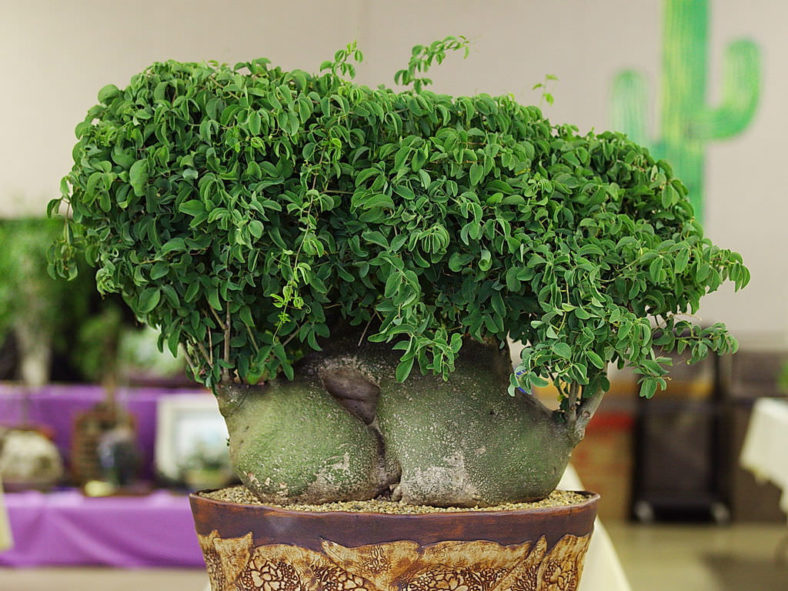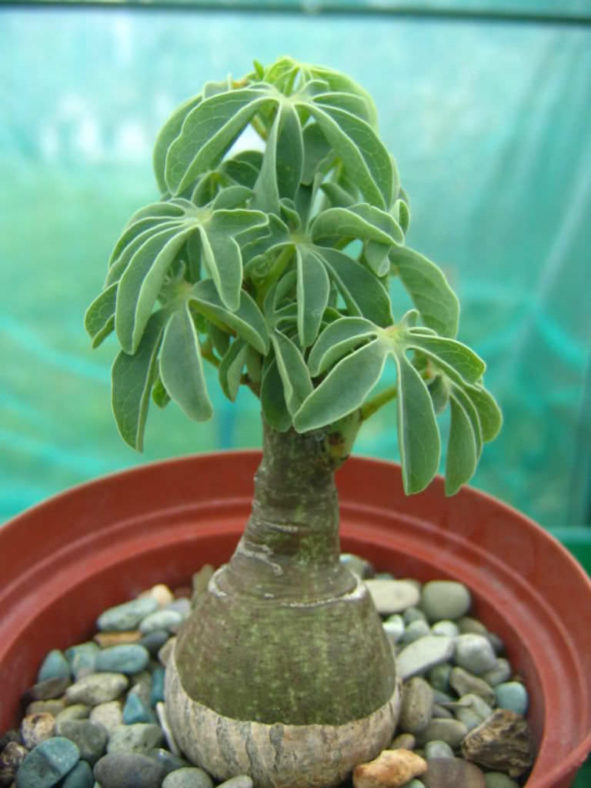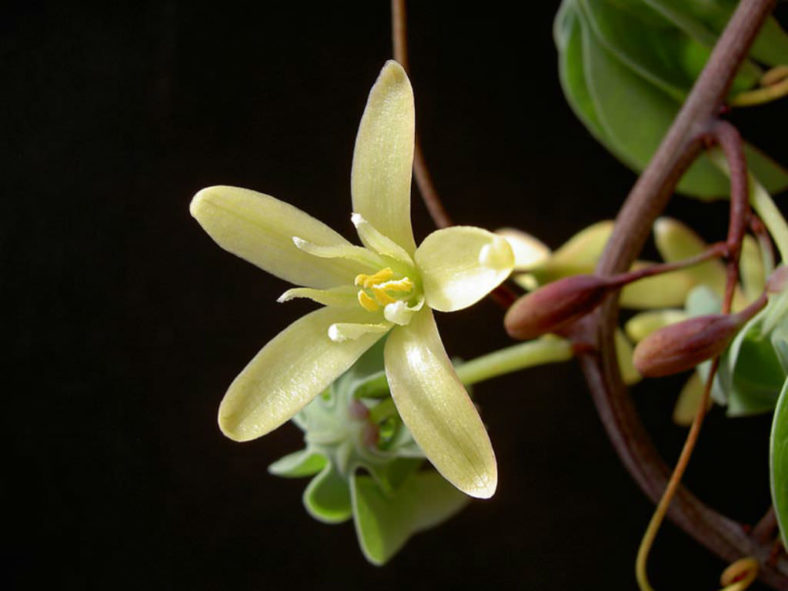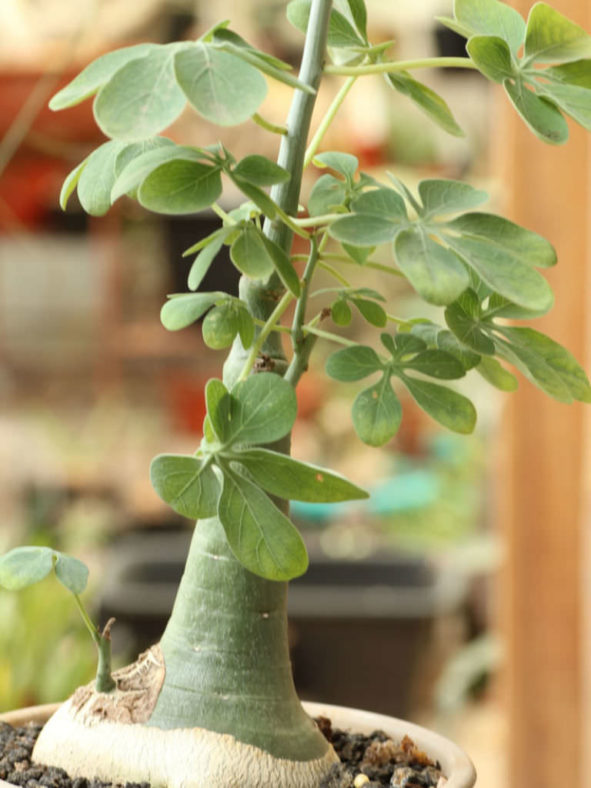Scientific Name
Adenia glauca Schinz
Scientific Classification
Family: Passifloraceae
Subfamily: Passifloroideae
Tribe: Passifloreae
Genus: Adenia
Origin
Adenia glauca is native to native to southern Africa. It occurs in rocky places or on sandy soil in the Transvaal province of South Africa and southeastern Botswana.
Description
Adenia glauca is an attractive, sometimes shrub-like climber that starts to form a greenish bottle-shaped trunk almost after seed germination, which keeps getting fatter as it grows. The caudex is fleshy and smooth and grows up to 3.3 feet (1 m) tall and up to 16 inches (40 cm) in diameter. In early spring, the caudex produces numerous up to 10 feet (3 m) long stems with greyish, glaucous, or purplish-grey leaves. The leaves are deeply 5-lobed, suborbicular in outline, up to 4.8 inches (12 cm) long, and nearly equal in width. They are larger near the base and smaller near the tip of the stem.
The flowers are sweetly scented, yellow to greenish yellow, up to 1.2 inches (3 cm) long, and appear from late winter to late summer. The male and female flowers occur on separate plants. The fruits are ellipsoid capsules with 3 to 5 tiny seeds.

Hardiness
USDA hardiness zones 11a to 11b: from 40 °F (+4.4 °C) to 50 °F (+10 °C).
How to Grow and Care
Adenia plants are summer growers and can be watered and fed regularly if planted in fast-draining soil. Let the soil dry between watering if you are in a humid climate.
Most of your growth will be during the warm season, and the plant will have the most leaves. The plant will also grow best with the leaves exposed to bright light, but the caudex is shaded.
Protect the plant from frost during the cool months to keep it alive. The plant rests typically during this period, and water should be kept to a minimum. However, you can keep the plant active above 50 degrees Fahrenheit (10 degrees Celsius).
Their sap is poisonous and should be handled cautiously, particularly when pruning.
Most cuttings do not produce a caudex, so it is best to propagate by seeds. Adenias are either male or female, so one of each is required to produce seeds.
See more at How to Grow and Care for Adenia.
Links
- Back to genus Adenia
- Succupedia: Browse succulents by Scientific Name, Common Name, Genus, Family, USDA Hardiness Zone, Origin, or cacti by Genus
Photo Gallery
Click on a photo to see a larger version.


